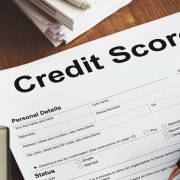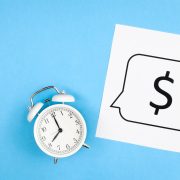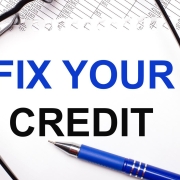How To Get A Business Loan With Bad Credit
A bad credit score, commonly identified as a FICO score between 300 and 579, can restrict a business owner’s ability to secure a loan. For business loans, a bad credit score often refers to anything less than 670. This score provides an assessment of the business owner’s financial habits, such as debt repayment history, that influence the likelihood of repaying a business loan. Challenges faced in the context of poor credit can direct borrowers towards lenders with higher tolerance levels, albeit potentially higher associated costs.
Types of Bad Credit Business Loans
Short-Term Small Business Loans
Short-term small business loans provide a fixed sum that must be repaid over a set period, usually within one to two years. Borrowers pay both principal and interest on a predetermined schedule, which can be daily, weekly, or monthly. Interest rates on these loans are typically higher to offset the risk associated with lending to borrowers with poor credit. This loan type is often chosen by businesses needing immediate capital with a clear repayment capacity.
Short-Term Business Line of Credit
A business line of credit gives borrowers access to funds up to a set limit, charging interest only on the amount currently in use. The flexibility of this option is beneficial for addressing recurring or fluctuating operational expenses. For businesses with credit challenges, lenders generally offer smaller lines of credit with higher interest rates. This option is frequently used by businesses that need repeated access to funding without the obligation to pay interest on unused amounts.
Equipment Financing
Equipment financing allows a business to obtain funding to purchase essential equipment. The purchased equipment itself typically acts as collateral for the loan. Companies like Taycor Financial offer 100% equipment financing with no down payment, making it accessible for startups or businesses with limited credit profiles. Since the equipment serves as collateral, lenders may have more lenient credit requirements for this loan type, focusing more on the value and longevity of the equipment.
Working Capital Loans
Working capital loans address immediate operational expenses, enabling businesses to manage costs without substantial delays. These loans are accessible to borrowers with lower credit scores, with some lenders like Credibly offering same-day funding. Working capital loans tend to carry higher interest rates and short repayment terms, making them suitable for urgent yet manageable expenses rather than long-term investment.
Invoice Factoring
Invoice factoring involves selling outstanding invoices to a factoring company, which provides a percentage of the invoice value upfront and collects the full amount from the customer when due. This option bases lending decisions on the customer’s creditworthiness rather than the business’s, making it a viable choice for businesses with poor credit. Invoice factoring helps improve cash flow without requiring the business to take on additional debt.
Merchant Cash Advances
Merchant cash advances provide funding based on the business’s future credit card sales, enabling the lender to collect repayments as a percentage of daily sales. This option bypasses the need for a credit check, focusing instead on the consistency of sales. Merchant cash advances are frequently used by retail or service-based businesses with steady daily sales, although they come with higher costs than other funding options due to variable repayment schedules tied to daily transactions.
SBA Microloans
SBA Microloans are designed to provide smaller loan amounts to business owners, particularly those from underserved backgrounds. These loans often come with less stringent eligibility criteria than other SBA loan types. Interest rates are capped by the SBA, ensuring affordable rates compared to other options available to low-credit businesses. SBA Microloans are suitable for smaller capital requirements and provide an option for entrepreneurs who may face barriers to traditional funding.
Minimum Credit Score Requirements by Lender
Different lenders have specific minimum credit scores for loan qualification, which helps potential borrowers identify suitable options.
- Loanz.com: No minimum credit score.
- Fora Financial: Minimum credit score of 570.
- Expansion Capital Group: Minimum credit score of 500.
- Headway Capital: Requires a minimum credit score of 625.
- National Funding: Requires a minimum credit score of 600.
- OnDeck: Accepts a minimum credit score of 625.
- Triton Capital: Accepts a minimum credit score of 575.
- Fundbox: Minimum credit score of 600.
- Giggle Finance: Offers loans with no credit check, with limited loan amounts available.
The SBA does not set a minimum credit score requirement; however, some SBA loans may need scores above 680 depending on lender discretion.
Application and Approval Process
Calculate Debt Affordability
Calculating debt affordability involves determining the maximum debt level manageable for the business. This calculation should take into account expected interest rates, fees, and the desired repayment schedule. Reviewing cash flow, expected revenue, and current financial obligations can help establish an affordable debt limit, reducing the risk of default and ensuring sustainable debt management.
Gather Documentation
Most lenders require a standard set of documentation, including bank statements, tax returns, financial statements, and collateral details if applicable. A well-prepared application expedites the approval process and strengthens the case for funding, especially when applying for loans with more lenient credit requirements.
Collateral or Cosigner Consideration
Offering collateral or finding a cosigner with a strong credit profile can enhance loan approval chances. Collateral provides security to the lender, while a cosigner’s higher credit score can mitigate the risk associated with a lower-credit borrower. Businesses lacking strong credit histories may benefit from presenting valuable collateral, such as real estate or business assets.
Prequalification
Many lenders provide prequalification services through a soft credit check. This initial assessment shows potential loan options without impacting the applicant’s credit score. Prequalification allows businesses to gauge funding availability and associated terms before formally committing to an application.
Interest Rates and Fees
Bad credit business loans typically feature elevated interest rates to compensate for the perceived risk. Rates for these loans can vary widely, often reaching up to 99% for certain loan types. Some lenders also impose additional fees, such as origination fees or draw fees for business lines of credit. National Funding, for example, offers prepayment discounts, allowing borrowers to reduce the interest burden by paying off the loan early.
Eligibility Criteria
Each lender has unique criteria for assessing eligibility, which can include factors beyond credit scores.
- Annual Revenue: Minimum annual revenue thresholds, such as Credibly’s requirement of $180,000, are common.
- Time in Business: Lenders often require businesses to have been in operation for a certain period, although some lenders consider younger businesses.
- Personal and Business Credit Scores: For businesses without a credit history, personal credit scores serve as a primary indicator for lenders evaluating creditworthiness.
Alternative Lenders
Online Lenders
Online lenders generally have lower credit requirements and expedited approval processes. These lenders, such as Fora Financial, Expansion Capital Group, and OnDeck, often require less documentation than traditional lenders, though they typically charge higher rates in exchange for reduced barriers to funding.
Community Development Financial Institutions (CDFIs)
CDFIs provide funding to underserved communities, often with lenient credit criteria and competitive interest rates. While CDFIs may have slower funding processes than online lenders, they offer a practical alternative for business owners facing credit limitations.
Nonprofit and Community Lenders
Nonprofit organizations and community lenders frequently offer smaller loans with manageable interest rates. These lenders focus on supporting small businesses and may provide additional resources, such as business planning assistance or financial literacy programs.
Approval Rates and Lending Challenges
Data from the Federal Reserve Banks’ 2023 Small Business Credit Survey indicates varying approval rates by credit risk level. Approximately 43% of high-credit-risk businesses and 31% of medium-credit-risk businesses experienced denials for loan applications, while only 13% of high-risk and 33% of medium-risk businesses obtained full approvals. Conversely, 62% of low-credit-risk businesses received full approval, underscoring the importance of credit risk management.
Steps to Improve Chances of Approval
Update the Business Plan
An updated and comprehensive business plan demonstrates preparedness and can improve the application’s attractiveness to lenders. A well-defined plan that includes revenue projections, expense forecasts, and risk management strategies provides evidence of responsible planning.
Choose the Right Lender
Selecting a lender suited to the business’s financial profile can increase approval chances. Comparing loan terms, fees, and interest rates across multiple lenders, including options like prepayment discounts, allows borrowers to make informed choices based on individual needs and capabilities.
Prepare Detailed Financial Information
Submitting thorough documentation of the business’s financial history, including bank statements, tax returns, and collateral information, ensures the lender can make a well-informed decision. Having detailed financial records ready demonstrates responsibility and can expedite the approval process.
Credit Score Impact on Business Loans
For many lenders, personal credit scores remain a primary factor in the loan approval process, particularly for businesses without established credit histories. Improving a personal FICO score increases funding options and may reduce loan costs. Borrowers with scores between 500 and 550 may face limited options; however, alternative lenders might evaluate factors such as annual revenue and business performance as supplementary considerations.
Alternative Financing Options
Business Credit Cards
Certain business credit cards are available to low-credit applicants. While they may have higher interest rates, responsible use can gradually build credit and enable future funding opportunities with improved terms.
Microloans
Nonprofit organizations often provide microloans to underserved borrowers, with competitive interest rates and lower principal amounts. These loans typically require a credit check and personal guarantee, but the amount and terms may be more manageable for new or small businesses.
Retirement Account Loans
Business owners may leverage retirement funds to finance their business, although this method involves considerable risks, including potential penalties and tax liabilities for early withdrawal. Using retirement accounts for business funding can deplete personal savings, impacting long-term financial stability.
SBA Loans
Most SBA loans include credit checks, though some types, like SBA Small Loans, have specific credit score criteria. The SBA Community Advantage Loan Program, for instance, requires minimum FICO SBSS scores, but individual lenders might still enforce higher standards, often necessitating strong personal or business credit scores.
Customer Support and Lender Reputation
Evaluating a lender’s reputation is essential for borrowers with poor credit. Researching past customer reviews, support services, and the lender’s overall record for transparent and fair practices can provide insight into the lending experience. Choosing a lender with a positive reputation can help borrowers navigate the loan process smoothly and ensure a satisfactory lending experience.
Merchant Cash Advances and No-Credit-Check Loans
Merchant cash advances provide flexible financing without a credit check, making them a viable option for businesses with poor credit. However, the repayment model, based on daily credit card sales, can result in higher costs over time.










